Operation Endurance 2025: Honouring Taonga Through Research and Partnership
In March 2025, a dedicated team of iwi-led researchers, conservation specialists, and members of the New Zealand Defence Force embarked on a journey to Aotearoa’s Subantarctic Islands aboard HMNZS Canterbury. Their goal was both scientific and cultural—collect taonga species, strengthen inter-agency partnerships, and deepen the role of mātauranga Māori in environmental research and protection. This was Operation Endurance 2025: a collaborative effort that blended tradition and innovation in one of the world’s most remote ecosystems.
Led by Hokonui Rūnanga Taonga Research, under the umbrella of Murihiku Regeneration’s Murihiku ki te Tonga programme, and supported by DOC and NZDF, the expedition highlighted the value of collaborative research and partnership.
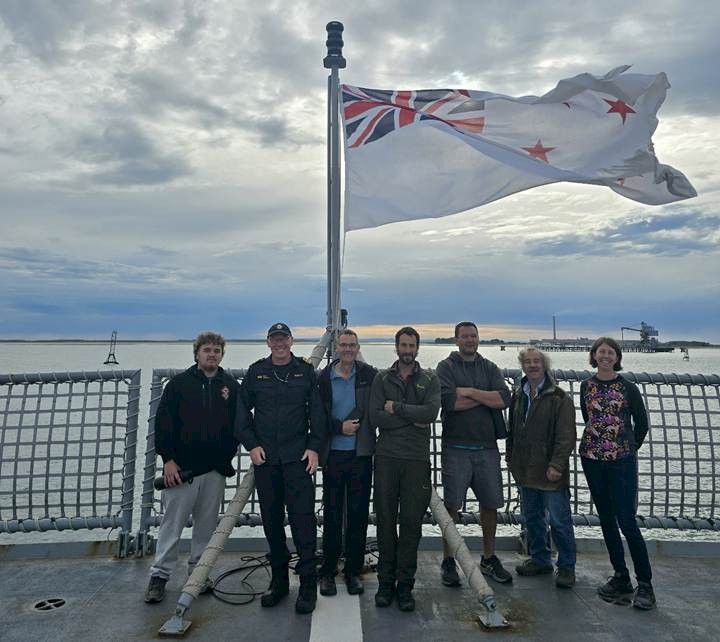 The Ngāi Tahu team aboard HMNZS Canterbury (left to right): Ali Harrison, LTCDR Nigel Finnerty (Navy), Brian Rance, Vincient Leith, Riki Parata, Tony Leith, Vanessa Horwell. Photo by Hokonui Rūnanga
The Ngāi Tahu team aboard HMNZS Canterbury (left to right): Ali Harrison, LTCDR Nigel Finnerty (Navy), Brian Rance, Vincient Leith, Riki Parata, Tony Leith, Vanessa Horwell. Photo by Hokonui Rūnanga
Murihiku ki te Tonga: A Southern Vision
At the heart of Operation Endurance lies the Murihiku ki te Tonga strategy—a long-term, place-based kaupapa emerging from Murihiku Regeneration. This southern research and leadership stream is focused science and innovation throughout Te Moana-tāpokopoko-a-Tāwhaki, (The Southern Ocean) connecting the broader ecosystems that stretch from Southland to Antarctica.
The programme champions Indigenous-led research and resilience-building activities, promoting mātauranga Māori alongside multiple science disciplines as essential tools for understanding and protecting the environment. Murihiku ki te Tonga is not a project—it is a generational vision to uphold kaitiakitanga, create pathways for rangatahi into conservation and research, and represent leadership in the stewardship of the Southern Ocean.
Operation Endurance served as a living example of this approach—bringing together DOC, NZDF, and Ngāi Tahu researchers to explore shared goals while ensuring tikanga Māori shaped every step of the expedition, from planning through to implementation.
The programme also includes rangatahi pathways, partnerships with the Sir Peter Blake Trust, and integration of STEM and mātauranga into schools and training initiatives—laying the groundwork for the next generation of environmental leaders.
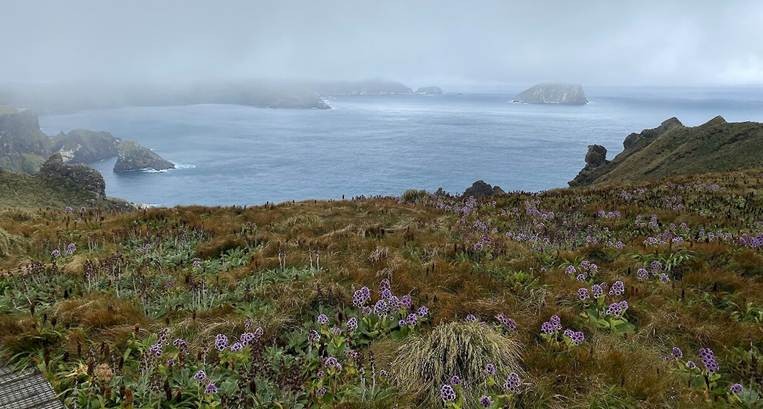 View from the top of Col Lyall walk, Cambell Island with Dent Island in the background and Pleurophyllum speciosum flowering in the foreground. Photo credit Hokonui Rūnanga.
View from the top of Col Lyall walk, Cambell Island with Dent Island in the background and Pleurophyllum speciosum flowering in the foreground. Photo credit Hokonui Rūnanga.
Gentianella Collection: Cultural Knowledge Meets Scientific Discovery
One of the most visible successes of the expedition was the collection of native megaflora, especially the rare and endemic Gentianella cerina, G. concinna, and G. antarctica. These species are part of a pioneering breeding programme between Taonga Research and Plant & Food Research, aiming to develop new ornamental cultivars while preserving taonga biodiversity.
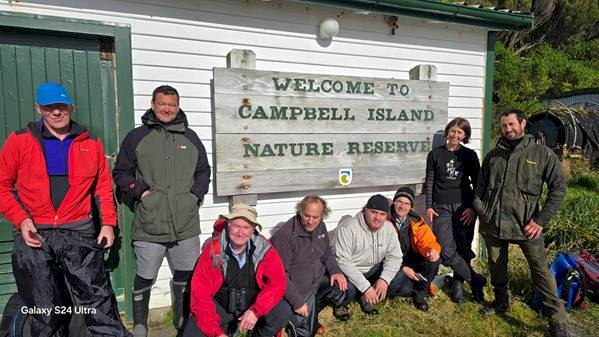 The Ngāi Tahu team at Perseverance Harbour, Campbell Island with Dr Richard Davies (Government House), from left to right: Nigel Finnerty, Riki Parata, Richard Davies, Tony Leith, Ali Harrison, Brian Rance, Vanessa Horwell, Vincient Leith. Photo by Hokonui Rūnanga
The Ngāi Tahu team at Perseverance Harbour, Campbell Island with Dr Richard Davies (Government House), from left to right: Nigel Finnerty, Riki Parata, Richard Davies, Tony Leith, Ali Harrison, Brian Rance, Vanessa Horwell, Vincient Leith. Photo by Hokonui Rūnanga
Botanist Brian Rance led the field sampling, supported by a dedicated team including Riki Parata, Vanessa Horwell, Ali Harrison, and others from Hokonui and associated Rūnanga. Collection efforts were undertaken on both Enderby and Campbell Islands and aligned with DOC’s scientific and ecological best practices, reinforced by mātauranga Māori collection protocols.
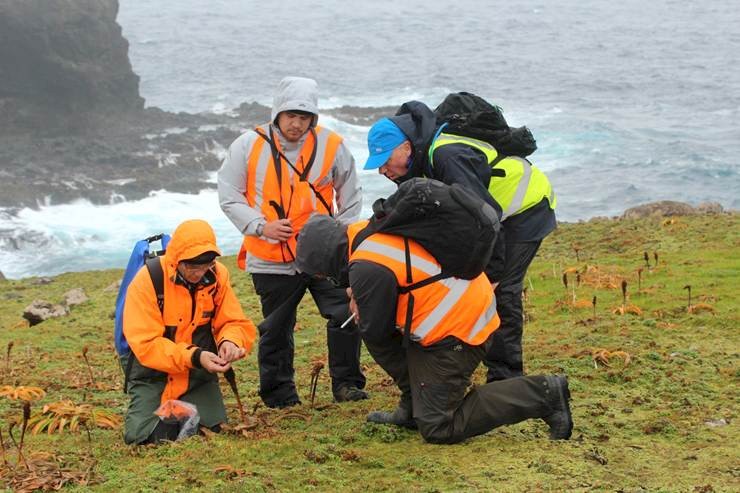 Brian Rance demonstrating correct Gentianella sampling techniques on Enderby Island with Ali Harrison, LTCDR Nigel Finnerty, and Riki Parata. Photo by Vanessa Horwell.
Brian Rance demonstrating correct Gentianella sampling techniques on Enderby Island with Ali Harrison, LTCDR Nigel Finnerty, and Riki Parata. Photo by Vanessa Horwell.
The team documented field conditions, flowering states, and GPS coordinates, and ensured all samples adhered to strict collection protocols. All viable seed and pollen samples were recovered and securely transported to Plant & Food Research Palmerston North facility, where propagation is now underway. In addition to scientific outcomes, this work supports cultural revitalisation through the development of iwi-led cultivation knowledge, potential future economic returns, and educational content for rangatahi.
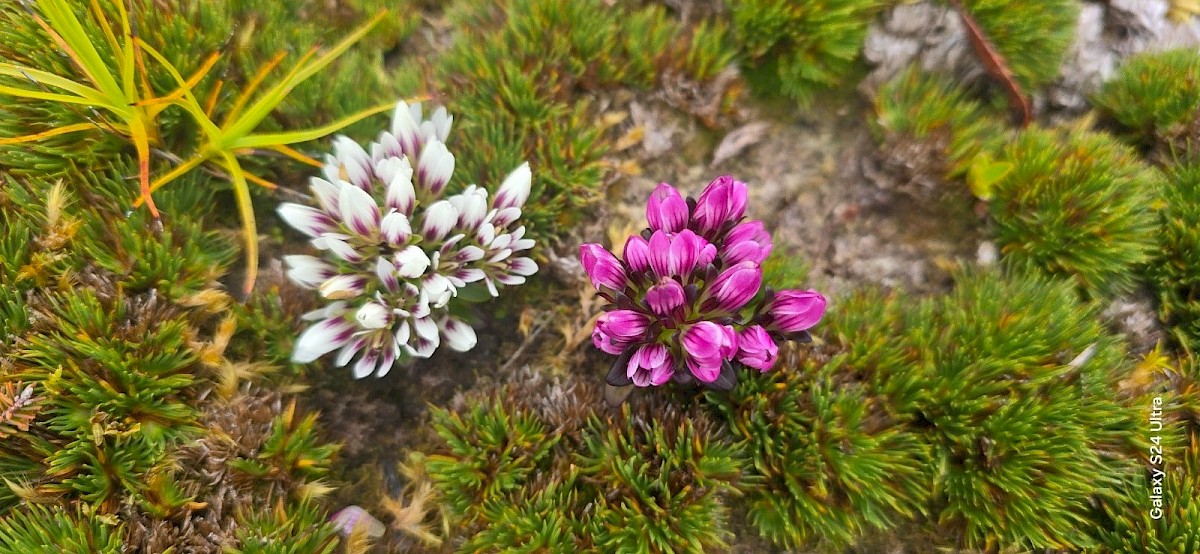 Gentianella cerina specimens collected during the trip. Photo by Riki Parata
Gentianella cerina specimens collected during the trip. Photo by Riki Parata
Preparing for Maukahuka Pest Eradication
Auckland Island (Maukahuka) remains the largest island in the Subantarctic with invasive mammal populations. As part of Operation Endurance, the team began on-the-ground scoping to support DOC’s future Maukahuka Pest Free programme—an ambitious multi-species eradication project targeting pigs, cats, and mice.
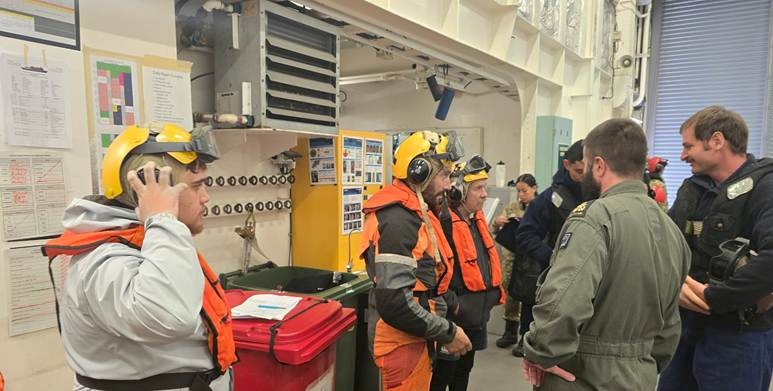 Ali Harrison, Vincient Leith and Tony Leith prepare to deploy via NZDF Sea Sprite helicopter for remote field access. Photo by Hokonui Rūnanga.
Ali Harrison, Vincient Leith and Tony Leith prepare to deploy via NZDF Sea Sprite helicopter for remote field access. Photo by Hokonui Rūnanga.
Leith Contractors Ltd, a Ngāi Tahu-led ecological services provider, assessed terrain accessibility, infrastructure needs, and potential staging zones. This included exploratory track work using hand tools and low-impact methods, identifying key areas for future fence construction and pest eradication logistics.
 Ali Harrison, Riki Parata, Dr Richard Davies, Commander Bronwyn Heslop, and Vanessa Horwell beside a Sea Sprite helicopter at the end of the voyage. Photo by Hokonui Rūnanga
Ali Harrison, Riki Parata, Dr Richard Davies, Commander Bronwyn Heslop, and Vanessa Horwell beside a Sea Sprite helicopter at the end of the voyage. Photo by Hokonui Rūnanga
These preparatory efforts will inform a detailed implementation plan and ensure the eradication programme is guided by mana whenua knowledge, operational best practices, and ecological responsibility. This work also contributes to future-proofing other pest control and restoration operations in the wider Subantarctic region.
The team supported DOC’s biosecurity and restoration objectives through weed surveillance and ecological track maintenance. Areas around Campbell Islands Sorenson Hut, Col-Lyall Ridge, and the main boardwalk received maintenance to ensure safe access for future research teams and weed management efforts.
These actions not only reduced the spread of weeds in sensitive ecosystems but also contributed to DOC’s long-term restoration plans and exemplified how iwi can play a proactive role in environmental protection efforts.
Marine Taonga and Biosecurity Observations
The marine component of the expedition focused on shallow-water dive surveys to identify, record, and collect taonga marine species. Two iwi members and NZDF-supported divers rotated through multiple dive zones, recording habitat conditions, biodiversity, and any signs of stress or invasive presence. Data collected during these dives contributes to a long-term taonga marine species monitoring initiative and lays the groundwork for iwi-led marine spatial planning and future collaborative biosecurity protocols with MPI and DOC.
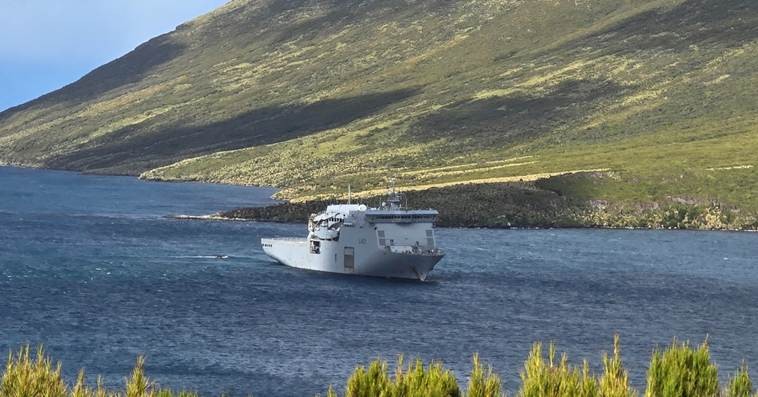 HMNZS Canterbury anchored in Perseverance Harbour, Campbell Island—the logistical base for the operation. Photo by Hokonui Rūnanga
HMNZS Canterbury anchored in Perseverance Harbour, Campbell Island—the logistical base for the operation. Photo by Hokonui Rūnanga
Strategic Outcomes and Future Opportunities
Operation Endurance achieved its tactical goals, but more importantly, it provided momentum for long-term strategic outcomes across multiple domains:
- Strengthening megaflora research, including propagation protocols, biosecurity best practice, and future seed banks
- Advancing a taonga species bio-economy, with a focus on bioactives, therapeutic products, and regenerative industries
- Contributing to predator-free New Zealand
- Supporting aquaculture development of culturally significant species in mainland IMTA systems
- Building climate resilience models through long-term phenological and ecosystem monitoring
- Creating new roles and training pathways for rangatahi in environmental science and field operations
- Connecting with global Indigenous research allies in the Southern Hemisphere and Arctic to form a cross-hemispheric knowledge network
The success of Operation Endurance 2025 was made possible through trust, collaboration, and a shared vision for the future. Onboard Canterbury, interagency respect and teamwork were evident—from planning strategy in the mess hall to laughing over discoveries in the field.
Lieutenant Commander Nigel Finnerty and the NZDF leadership team provided outstanding manaakitanga, helping to foster an environment where all voices were heard, and goals were exceeded. As reflected in correspondence following the trip, the operation not only met targets—it helped establish the culture and logistics needed for future missions.
Moving forward, the team will refine internal debrief notes, engage with stakeholders, and prepare for future seasons of research and restoration. With the groundwork now established, Operation Endurance has become a model for what Treaty-based conservation can look like: bold, collaborative, and grounded in place.
Posted: 9 May 2025
